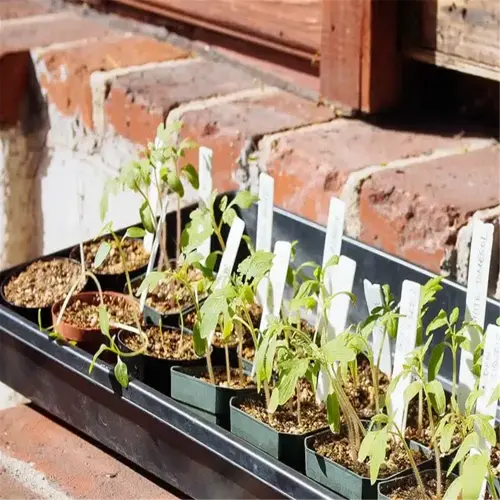Growing Herbs Indoors: The Ultimate Beginner's Guide

Written by
Michael Sullivan
Reviewed by
Prof. Samuel Fitzgerald, Ph.D.To successfully grow herbs indoors, you will want to provide 6 or more hours of sunlight, or utilize full-spectrum grow lights
For the greatest success indoors, you'll want to start with lower-light herbs like mint and chives
Water Mediterranean herbs only when the soil has completely dried out to avoid root rot
When planting rosemary, use a cactus soil mix, which will help ensure good drainage and airflowaround the roots
Combat pests naturally by using neem oil sprays and cinnamon for soil treatment
Finally, you will want to feed herbs once a month with diluted fish emulsion for an organic nutrient boost
Article Navigation
Growing herbs inside take the sting out of having limited outdoor space for gardening or running short on fresh herbs in winter. Just think of cutting fresh basil to add to your pasta in January, or chopping up fresh chives to toss into your soup on the day it comes to a snowstorm. You don't need to have your yard to enjoy the fresh-from-the-garden flavor all year long!
I founded my first indoor herb garden in a small apartment with a sunny windowsill. Before long, my mint flourished better than any of my outdoor plants had ever done. Maintaining an indoor garden is much easier because you have greater control over light, water, and pests.
If you want to grow herbs at home, rosemary and thyme are appropriate choices. These herbs tolerate pots much better than vegetable beds and require less work. Choose the compact varieties that suit your situation. If you have a single south-facing window, you can have a moving harvest of commonly used kitchen herbs with no weeding or risk of frost!
At the end of the day, success truly depends on how closely you can replicate the environment in which the plants you're growing thrive naturally. For example, Mediterranean herbs prefer poor, gritty soil and lots of light; whereas shade-tolerant parsley is perfectly happy under grow lights or LEDs. My advice: Start with somewhat foolproof plants like oregano and build your garden from there. You can be amazed at what you can do even with a small garden.
12 Essential Herbs for Indoor Growing
Growing herbs indoors begins with varieties that are forgiving for beginners. Basil and Mint are on the top of the list for being easy to grow. Basil requires 6+ hours of light, and mint can handle darker corners of the house. Either herb will bounce back quickly if you miss watering.
Light defines success. Mediterranean herbs, for instance, rosemary requires south-facing windows or some strong grow lights. Likewise, parsley and chives will grow with less light, but they won't grow as quickly. I learned this the hard way after my first rosemary plant wilted in my north-facing kitchen.
Pet owners should steer clear of toxic types of herbs. Lemongrass and bay laurel are harmful to cats; thyme and oregano are safe. Always consult your local ASPCA list before you plant herbs and keep in mind a common mistake I made with my cat's behavior. I should have moved my toxic herbs up to high shelves!
Soil has its foundation in nature. For instance, rosemary enjoys a gritty cactus mix that will mimic its native habitat of rocky Mediterranean hills. For example, basil prefers a rich compost blend that mimics its tropically native habitat. If you match your soil to your plant's natural habitat, you can avoid issues such as root rot or stunted growth.
Start with chives; they're tolerant of low light and infrequent attention and will provide a little green. If you want something a bit more productive, try lemon balm. It's very forgiving to neglect but will probably spread quickly! Lastly, for some color, try the purple sage. Only deal with lavender if you can monitor the humidity because lavender can be tricky. Your windowsill will thank you for your patience and commitment by delivering unrelenting flavor.
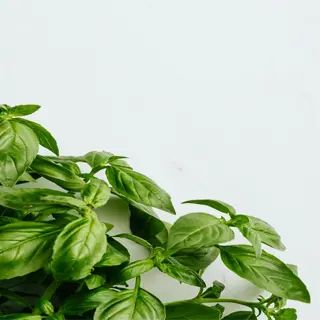
Basil
- Requires 68-77°F (20-25°C) for optimal growth
- Pinch flower buds to prolong leaf production
- Use well-draining soil with pH 6.0-7.0
- Susceptible to fusarium wilt in humid conditions
- Harvest top leaves first to encourage bushiness
- Daily light rotation prevents lopsided growth

Mint
- Spread through underground runners in containers
- Tolerates temperatures down to 50°F (10°C)
- Prune weekly to maintain compact shape
- Use 10-inch/25 cm wide containers minimum
- Yellow leaves indicate overwatering issues
- Chamomile companions improve flavor intensity
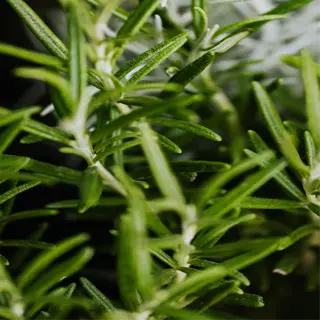
Rosemary
- Needs 40-50% humidity for needle health
- Mature plants require 3-gallon/11 L pots
- Water only when soil is completely dry
- Rotate plant 180° weekly for even growth
- Woody stems indicate age over 2 years
- Essential oil peaks at 6 hours sunlight
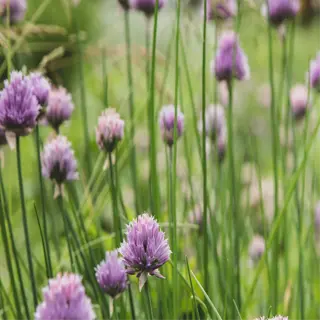
Chives
- Thrive at 60-70°F (15-21°C)
- Cut leaves 2 inches/5 cm above soil
- Divide clumps every 3 years
- Use garlic chives for Asian recipes
- Tolerates fluorescent office lighting
- Fertilize monthly with fish emulsion
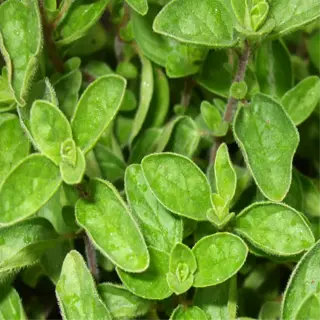
Oregano
- Greek variety has strongest flavor
- Prefer terracotta pots for drainage
- Harvest before flowering for potency
- Tolerates 55°F/13°C nighttime temps
- Prone to spider mites in dry air
- Drought-tolerant once established

Thyme
- Lemon thyme variety repels pests
- Water only when soil cracks
- Use sandy soil mix for drainage
- Trim woody stems in spring
- Susceptible to root rot
- Flowers attract beneficial insects
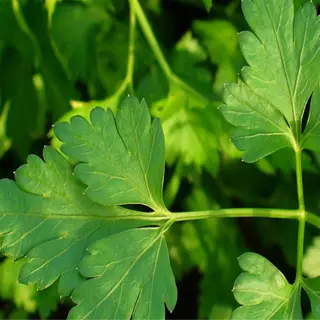
Parsley
- Flat-leaf has stronger flavor
- Germination takes 14-28 days
- Keep soil pH 5.5-6.5
- Requires 12-inch/30 cm depth
- Yellow leaves need nitrogen boost
- Biennial life cycle
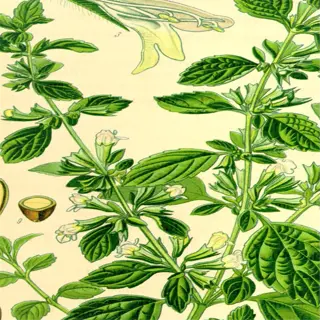
Lemon Balm
- Prune to 4 inches/10 cm height
- Leaves turn black below 45°F/7°C
- Use self-watering containers
- Attracts whiteflies in summer
- Dry leaves for herbal tea
- Tolerates north-facing windows
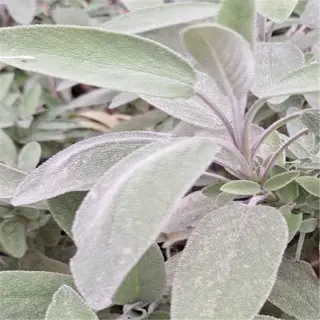
Sage
- Purple sage needs brightest light
- Avoid water on fuzzy leaves
- Repot every 2-3 years
- Use for smudge sticks
- Susceptible to powdery mildew
- Flavor intensifies with age
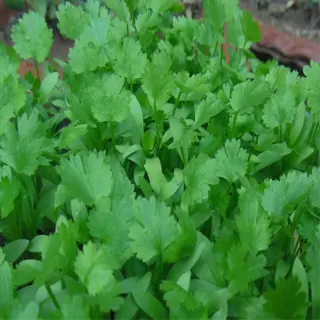
Cilantro
- Bolts above 75°F/24°C
- Use succession planting
- Soak seeds overnight
- Harvest outer leaves first
- Requires 6-inch/15 cm depth
- Crush leaves for pesto

Dill
- Needs 12-inch/30 cm pots
- Support stems with stakes
- Use for pickling recipes
- Attracts swallowtail butterflies
- Seeds ripen in 90 days
- Tolerates cooler temperatures
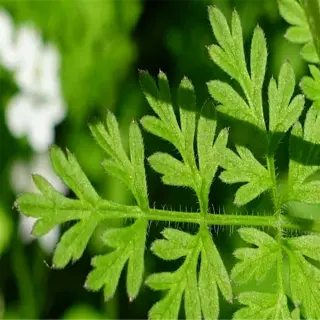
Chervil
- Prefers 60-65°F/15-18°C
- Use in French fines herbes
- Direct sow in containers
- Harvest at 6-inch/15 cm height
- Dislikes transplanting
- Companion with radishes
Light and Environment Setup
Growing herbs indoors requires thoughtful light placement. South-facing windows provide an ideal source of 6+ hours of direct sun that many herbs thrive on, such as rosemary and thyme. I once burnt basil placing it in a west-facing window, as it had more sun than it wanted. East-facing locations are good for morning sun-type plants such as parsley.
Evaluate light intensity using foot-candle equivalents. Most herbs need 2,000-5,000 lux (200-500 foot candles). My cheap $20 light meter indicated my "sunny" kitchen has only 800 lux. LED grow lights fixed the issue, with a 12-inch height above the plants for 14 hours a day.
Winters in the Northern Hemisphere could reduce daylight by half. You can either move herbs closer to windows or simply turn the grow light on a little bit longer. For gardeners in the Southern Hemisphere, the intense summer sun can cause bean leaves to burn and sheer curtains can help. If using pots, be sure to rotate them every week or so to give all sides equal time in the sun.
Adjust humidity to reflect the conditions of the herbs' native environments. Basil prefers 50-60% humidity, which is generally found in a kitchen near the stove. Rosemary prefers 40% humidity and should not be misted. I set up trays of pebbles with some of the herbs that like moisture. If you live in a dry climate, an inexpensive small humidifier is great for herbs because it prevents crispy leaf edges and will not promote mold growth.
Light Placement
- Distance: 6-12 inches (15-30 cm) from plant canopy
- Angle: 45° tilt for even coverage
- Height Adjustment: Raise 1 inch/2.5 cm weekly as plants grow
Duration
- Seedlings: 16-18 hours daily
- Mature Herbs: 12-14 hours
- Winter Supplement: Add 2 hours to natural light
Spectrum
- Vegetative Growth: 4000-6000K color temperature
- Flowering Prevention: Below 3000K for basil/mint
- Full Spectrum: 300-800 nm range ideal
Maintenance
- Wipe Bulbs: Monthly dust removal
- Replace T5/T8: Every 10-12 months
- LED Lifespan: 50,000+ hours
Energy Efficiency
- LED: 20-40 watts (0.02-0.04 kWh) per sq ft/0.09 m²
- Fluorescent: 40-60 watts (0.04-0.06 kWh) per sq ft/0.09 m²
- Energy Star Certification: Saves 30% electricity
Watering and Soil Mastery
The process of growing herbs indoors begins by selecting a suitable recipe for the soil. Coconut coir materials drain moisture faster than peat moss, so coconut coir might be best for growing Mediterranean-style herbs like rosemary, which dislike their roots being wet. Peat sources will keep the moisture longer and may work better for the thirstiest of herbs, like basil or parsley, in dry or dark homes.
Water according to the depth of the root system. Chives which are very shallow rooted, prefer light, frequent drinks. Oregano, which has a deep root structure, prefers deep watering every 10 days. I killed my first thyme by watering every week; I would water - and water - and my fuzzy-leafed thyme was wilting and yellowing from being in too much water. Now I look at the roots before reaching for the watering can.
When Mediterranean herbs are overwatered, the leaves become limp and a grayish color appears. Also, leafy mint typically turns black at the stems. For organic potting mixes, test the soil pH at least once a month. Basil enjoys a pH of between 6.0-7.5. A $15 meter saved my sage when I mixed compost that went quite wrong and made it quite acidic.
Improve drainage for drought-resistant herbs by incorporating perlite into store-bought potting soil. Use a layer of coconut coir under mint roots for moisture retention. Make sure to allow the top inch to dry out before watering again. Your herbs will reward you with rich oils and vibrant growth!
Peat Moss
- Retains 20x its weight in water
- Acidic pH (3.5-6.0) ideal for blueberries
- Mix 30% with perlite for herbs
Perlite
- Volcanic glass aerates soil
- Prevents root rot in succulents
- Sterile medium for seed starting
Compost
- 1:1 carbon/nitrogen ratio ideal
- Adds beneficial microorganisms
- Use 40% in leafy herb mixes
Sand
- Improves drainage in clay soils
- Use coarse builder's sand only
- 10-15% mix for Mediterranean herbs
Vermiculite
- Holds cations for nutrient retention
- Breaks down slower than perlite
- Use 10% in seed starter mixes
Preventing Pests Naturally
Pests love houseplants, especially herbs, but most harmful insecticides or sprays will ruin your edible plants. A gardener's best option is organic neem oil diluted in water (1 tsp per quart) to interfere with aphids' lifecycles, without adding toxicity. I spray my basil once a week, always surveying the underside of leaves, where bugs prefer to hide. I also use sticky traps to catch any adults who may have escaped my spray and are still hanging around before they lay their eggs.
Learn to match defenses with perceived plant weaknesses. Basil* attracts spider mites when I don't raise humidity using pebble trays during dry indoor weather. Mint* produces dense foliage ideal for harboring mealybugs. Isolate infected plants and dab the pests with a cotton swab dipped in rubbing alcohol. "An ounce of prevention is worth a pound of cure."
Growing certain plants together can naturally repel pests. For example, to repel nematodes, you can grow marigolds with herbs. Planting chives with parsley disguises its scent from carrot flies. I plant garlic cloves alongside my rosemary pots because the smell of sulfur confuses the whiteflies that are looking for a meal.
When time allows, break pest lifecycles. Fungus gnat larvae will die from soil completely drying out between waterings. For scale insects, cut them away in the early morning when they are even more sluggish than usual. Rotate the herb container every month when you give your herb a haircut to disrupt breeding activities that may be occurring in stagnant air.
Neem Oil Application
- Mix 1 tsp neem with 1 quart water
- Spray undersides of leaves weekly
- Disrupts insect growth cycles
Diatomaceous Earth
- Food-grade powder only
- Creates barrier on soil surface
- Reapply after watering
Companion Planting
- Chrysanthemums repel beetles
- Basil deters thrips
- Marigolds combat nematodes
Sticky Traps
- Yellow for gnats/whiteflies
- Blue for thrips
- Replace every 2 weeks
Manual Removal
- Q-tip alcohol for mealybugs
- Strong water spray for aphids
- Prune infested leaves
Fertilizing and Feeding Basics
Growing herbs indoors has specific feeding methods. Organic fertilizers, such as fish emulsion, are their nutrient release rates rather slowly to simulate natural soil processes. Synthetic options, on the other hand, provide an immediate boost while risking salts accumulating in your soil. My basil thrived with the organic option, while the rapid-growth synthetic option left the edges of my thyme bedraggled.
Adjust feeding depending on the season. Herbs in active growth (spring and summer) need nitrogen during active growth. Diluted compost tea is a good approach every three weeks. During winter dormancy, herbs will need little to no fertilizer. One year, I over-fertilized rosemary in December, and the needles yellowed until water flushed the soil.
Micronutrients can either bring about or ruin flavor. Basil needs magnesium to produce oil, just add a teaspoon of Epsom salt per gallon of water every month. Parsley needs iron to obtain the deepest green color. So test your soil every year. I figured out my cilantro plants were growing slowly because they were deficient in zinc. I resolved the zinc deficiency by adding crushed-up eggshells.
To prevent root burn, halve both fertilizer doses. And, to avoid root burn, be sure to thoroughly water before applying liquid fertilizers. If you're using granular mixes, always make sure to bury the mixture at least 2 inches below the surface. Scorched sage has taught me to always pre-moisten dry soil before I feed. Weak yellowing leaves indicate overfeeding, so act fast to leach the excess salt.
Organic Options
- Dilute fish emulsion to 1/4 tsp per gallon (5 mL/4 L)
- Top-dress worm castings every 6 weeks
- Avoid fresh manure due to salt content
Synthetic Risks
- Chemical buildup in potting soil
- Flush soil monthly with distilled water
- Never exceed label dosage
Seasonal Timing
- Spring: Higher nitrogen for growth
- Winter: Reduce feeding by 50%
- Avoid fertilizing dormant plants
Foliar Feeding
- Spray diluted seaweed extract at dawn
- Avoid flowering herbs
- Wipe leaves after application
Deficiency Signs
- Yellow leaves = nitrogen deficiency
- Purple stems = phosphorus needed
- Brown edges = potassium shortage
5 Common Myths
For indoor herbs to do well, they need to be watered every day.
Over watering is the number one cause of death for indoor herbs. Most herbs prefer the soil to dry out a little between watering. Mediterranean herbs, like rosemary and thyme, prefer the soil to feel completely dry on the top two inches (5 cm) of soil before watering again.
All herbs require all day sunny conditions.
Most Mediterranean herbs require full direct sun for 6 or more hours, but shade-tolerant herbs, like mint and lemon balm, are fine with 4 hours of indirect light. If you are in a dark space and do not get useable light, use grow light to supplement nature.
Unlike organic fertilizers, chemical fertilizers are typically faster and more efficient at making nutrients available for plant uptake.
Organic fertilizers like fish emulsion provide nutrient release more slowly, allowing for the avoidance of root burn. In addition to chemicals causing salt buildup, most synthetic fertilizers need to be flushed monthly when used in soilless solutions. Herbs grown organically produce more complex flavors when cooking.
Cutting back herb plants will harm them and reduce yield.
Selective pruning will encourage bushier growth and extend flowering time for your herbs. Always prune just above a leaf node with sanitized shears. If you harvest no more than 1/3 of the foliage every time, you should be maximizing continual yields.
Anything that has drainage will work.
Porous terra cotta pots allow the soil to breathe to reduce the risk of root rot, while plastic will hold moisture useful when growing water-loving herbs like mint. The depth of the container must accommodate the root systems of the specific herb. For rosemary, for example, you need a pot that is at least 12 inches (30 cm) deep.
Conclusion
To get started in growing herbs indoors, it is as easy as it gets. Plant some mint or chives; they thrive on neglect and are forgiving for novice errors. My first windowsill garden had a pot of mint that survived while my outdoor plants wilted in the extreme heat. These herbs show that herb gardening is entirely possible even with a lack of knowledge and experience.
Light, water, and soil work in unison. Bright light requires more watering, but gritty soil avoids sogginess. After I saw my basil yellowed in the dense potting mix, I learned how to strike this balance. Adjust one and the others follow. Once you master this trio, every herb will be possible.
When you're feeling brave, try rosemary. The plant requires good air flow and lean soil is a test of your abilities as a gardener. Before I moved it near a fan, I almost lost mine due to humidity. These types of challenges help you grow as a gardener; you learn through small victories that become habits for life.
You have the option to locate an all-year-round harvest right in your kitchen. Just think of adding fresh thyme to holiday meals or drying fresh summer basil in full summer sun for winter stews. You can start with just one or two plants, and as you grow, the herbs will continue to grow in your garden. In no time, you will start trading packets from the grocery store for herb snippers always by your side. Every season will become the season for herbs!
External Sources
Frequently Asked Questions
Can I grow herbs indoors year-round?
Yes, herbs can thrive indoors year-round with proper lighting and temperature. Use full-spectrum grow lights for 12-14 hours daily during darker months and maintain consistent temperatures between 65-70°F (18-21°C) for optimal growth.
Which herbs are unsuitable for indoor growing?
Avoid large-rooted herbs like horseradish and lovage. Fennel inhibits nearby plants' growth, while tarragon struggles with indoor humidity levels. Focus on compact herbs like basil, thyme, or mint for better success.
What are the best low-light herbs for indoors?
Mint, chives, and lemon balm adapt well to low light. Place them in east-facing windows or under LED grow lights for 4-6 hours daily. Avoid sun-loving herbs like rosemary in dim spaces.
Do indoor herbs need direct sunlight?
Mediterranean herbs like rosemary and oregano require 6+ hours of direct sun. Shade-tolerant varieties like parsley thrive with indirect light. Supplement with LEDs if natural light is limited.
Are indoor herbs safe for pets?
Many herbs like basil and thyme are pet-safe, but avoid lemongrass, bay laurel, and pennyroyal mint. Research toxicity before planting and keep harmful herbs out of pets' reach.
What's the hardest herb to grow indoors?
Rosemary is notoriously difficult due to its need for high humidity, gritty soil, and 8+ hours of light. Overwatering causes root rot, while dry air invites spider mites.
How do I prevent pests in indoor herbs?
Avoid pests by:
- Sprinkling cinnamon on soil to deter fungus gnats
- Using yellow sticky traps for flying insects
- Isolating new plants for 2 weeks before introducing them
How often should I water indoor herbs?
Water Mediterranean herbs only when soil is completely dry. Keep moisture-loving herbs like mint slightly damp. Check soil 1-2 inches deep before watering to prevent overhydration.
What's the easiest herb for beginners?
Chives are nearly foolproof:
- Tolerate low light and cooler temperatures
- Grow in small pots with basic soil
- Regrow quickly after harvesting
Can aggressive herbs share pots?
Avoid pairing invasive herbs like mint or lemon balm with others. Their roots dominate containers, stifling neighbors. Grow them separately in sealed pots to prevent spreading.
